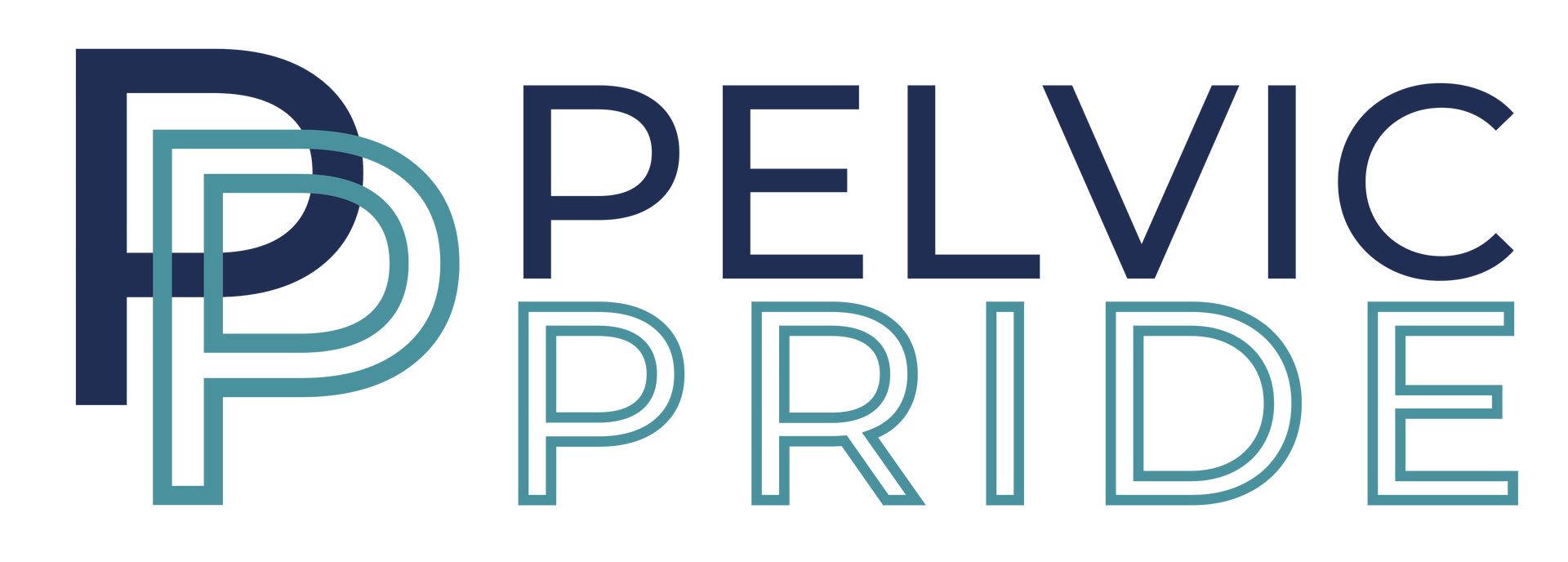The Four Pillars of Pelvic Health
At Pelvic Pride we talk a lot about taking a whole body approach to our treatment. This doesn’t just mean assessing a patient from head to toe, it also means considering other factors that impact someone as a whole person as we aim to discover the underlying ‘why’ to their symptoms. We ask about daily habits, work activities or the things that fill their day, and the impact of the environment on their symptoms. These questions can be fit into what we call the four pillars of pelvic health: stress, sleep, movement, and nutrition. Each area has an impact on how we feel in our body and impacts our body’s ability to heal. Let’s take a look at each pillar and its impact on the pelvic floor.
(You can also check out our podcast episode on the four pillars of pelvic health!)
The Four Pillars of Pelvic Health:
1. Stress
We are all too familiar with stress. Maybe it's a tough day at work, or an upcoming personal event. Other times it is physical stress on the body like a long weekend of house chores or training for a marathon. While some stress is necessary for survival, too much bad stress can negatively impact the pelvic floor.
As we hold onto the bad stress our nervous system starts to become upregulated (read:
ON FIRE!). This is felt when you start to notice that you are becoming irritable very quickly. Maybe you seek out quiet, want to escape the clutter, or even start to feel hypersensitive to the way things feel on your skin. Yep! Those are the signs that your nervous system is moving towards
fight-flight-freeze-fawn. As a result the pelvic floor muscles start to guard (or tighten up) as to protect your body from harm (we are looking at all your who joke that you are tight asses). While there may be no actual harm occurring, the body will hold onto that stress anyways - just in case.
The pelvic floor isn't the only place we see this happening. Many people hold stress in their neck and shoulders while others may hold it in their jaw by clenching their teeth. Well, guess what? The jaw and the pelvic floor are very related, so if you clench your teeth, chances are your pelvic floor is clenched too.
So what?! When we clench our muscles we are not allowing blood flow into the area which is key for healing, bringing oxygen to the tissue, and keeping the pelvic floor muscles functioning optimally by fully relaxing and engaging through their full range of motion.
How do I fix it?
Try doing body scans throughout the day. Take a deep breath and slowly scan down your body and let go of what feels tight:
relax your jaw, shoulders, belly, butt, and pelvic floor muscles. If things feel engaged or tense, channel your inner Elsa from Frozen and let it go.
2. Sleep
Ah, sleep! For some this is the best part of the day. For others it is a dreaded time of laying in bed, struggling to fall asleep and counting down the hours until morning. This is because sleep is a vital part of survival. In fact, we can survive longer without food than we can without sleep.
While we sleep our body is in a restorative state aimed at five key areas:
- Increased blood flow throughout the body which carries oxygen and nutrients to the muscles for recovery
- Hormones released during deep sleep help to aid in healing, muscle repair, and new tissue growth
- Prolactin is released to reduce inflammation throughout the body
- Cortisol levels are reduced therefore the stresses in our body are reduced (cortisol is the stress hormone that can result in a decreased immune system and increased blood pressure)
- Proteins are produced by the body to help build new cells for healing and tissue repair
So whether you are recovering from a pelvic floor surgery, have recently delivered a baby, have a chronic pain or inflammatory disorder, or have been under an increased amount of stress lately, sleep is clearly an important factor when considering your road to recovery.
This is why we will discuss your sleep habits and address various areas including your
fluid intake and
bathroom trips around your bedtime routine, the
positions and supports (like pillows) you utilize when laying down to sleep, and how to cultivate a
restful environment for improved quality of sleep such as
avoiding screen time 30 minutes before bed, using a weighted blanket, or listening to a meditation prior to falling asleep.

3. Movement
Physical therapists are the movement experts, so you know we love chatting about this pillar! Movement improves circulation, promotes metabolism (how we convert food and drink into energy), regulates our bowel and bladder function, impacts our strength and endurance, and can play a major role in mental and emotional health.
As you can see from the above pillars, blood flow and energy are big players in our overall tissue health and movement is one more way we can promote these two areas. Movement also has a big impact on the health of our bowels. This is because our abdominal muscles lay directly over our gastrointestinal (GI) tract and when we move our abdominal muscles we are helping to improve the motility of our gut.
(motility = the movement of stool through the GI tract)
So between keeping blood flowing, lengthening and strengthening pelvic floor muscles, and keeping our stool moving through the body, movement is a valuable addition to your routine.
Don’t worry, you don’t have to love exercise to still get the benefits of movement for your pelvic floor. We love discussing how movement can look different for every person and does not necessarily mean you need to head to the gym. Instead you can try adding in a couple
yoga poses
or stretches to break up your workday, go outside for a
walk or bike ride, lean into an at-home
strengthening routine, or even some focused
breathing techniques to stimulate the vagus nerve for rest-digest-repair.
4. Nutrition
Finally what we ingest each day certainly has an impact on all systems of the body. As pelvic health therapists, we frequently work with patients who are navigating bowel and bladder difficulties that can be impacted by nutrition. This often looks like constipation, fecal urgency/leakage, or urinary urgency/frequency/leakage. Additionally, we support individuals who may be navigating chronic diagnoses that can be impacted by nutrition, such as irritable bowel syndrome (IBS), SIBO, and fibromyalgia, to name a few.
In pelvic floor therapy we can assist with identifying nutrition strategies that best support your symptoms and rehabilitation course of care. This may include:
- Incorporating different fiber types (via whole foods or OTC fiber supplements) to improve the consistency of bowel movements for an easier go
- Reviewing foods or drinks that may be irritating your bladder and causing urgency/frequency (we’re looking at you seltzer)
- Discussing other potentially beneficial approaches such as an elimination diet and looking into inflammatory foods (with the support of additional providers who are skilled in this area)
We also recognize the importance of a collaborative approach to best support our patients and work to ‘quarterback’ your care in any way we can, including providing resources for gastroenterologist, nutritionist, and/or dieticians if we find that could be another important perspective for your care.
Hopefully now you can see why your providers may ask questions that seem to go beyond your exact symptoms. When we ask questions about your stress, sleep, movement, and nutrition we are trying to gather information that draws a bigger picture as to why you are experiencing the symptoms that bring you into pelvic floor therapy. Sometimes the smallest tweaks to your routine can lead to a faster or more complete rehab process.
Tl;dr
- The four pillars of pelvic health are:
- Stress: your nervous system is on fire so your muscles squeeze to protect
- Sleep: your body needs sleep to repair and recharge
- Movement: keep that blood pumping, muscles moving, and gut happy
- Nutrition: what you eat matters!
Where to find treatment in Maryland
At Pelvic Pride Physical Therapy & Wellness, we specialize in the treatment of ALL pelvic floor conditions, so you are in the right place! We are conveniently located in the Federal Hill neighborhood in Baltimore MD. Fill out our contact form & our Patient Care Specialist will reach out to you ASAP!
Next on Your Reading List
Love our content? Let's stay connected!
Subscribe to our newsletter for personalized updates when new blog posts are dropped.






